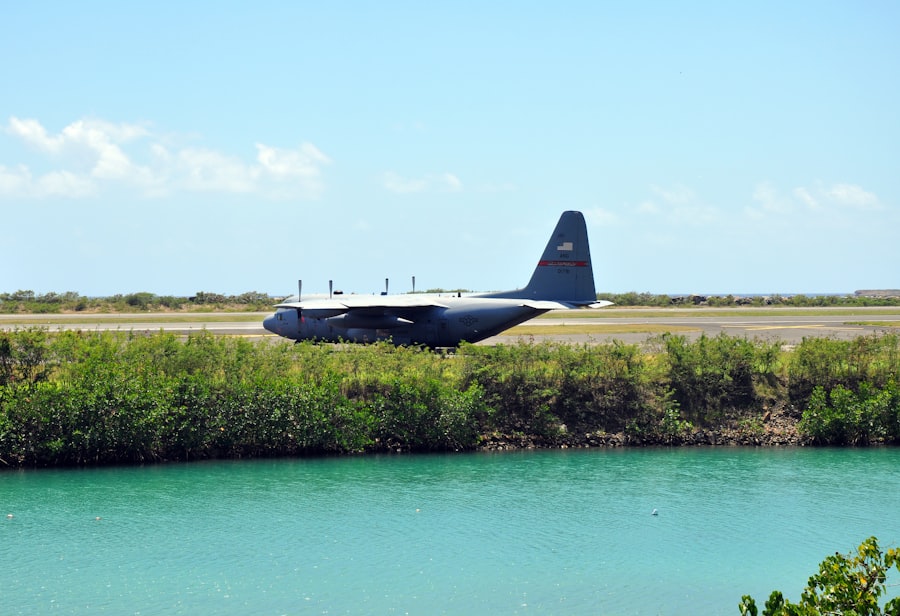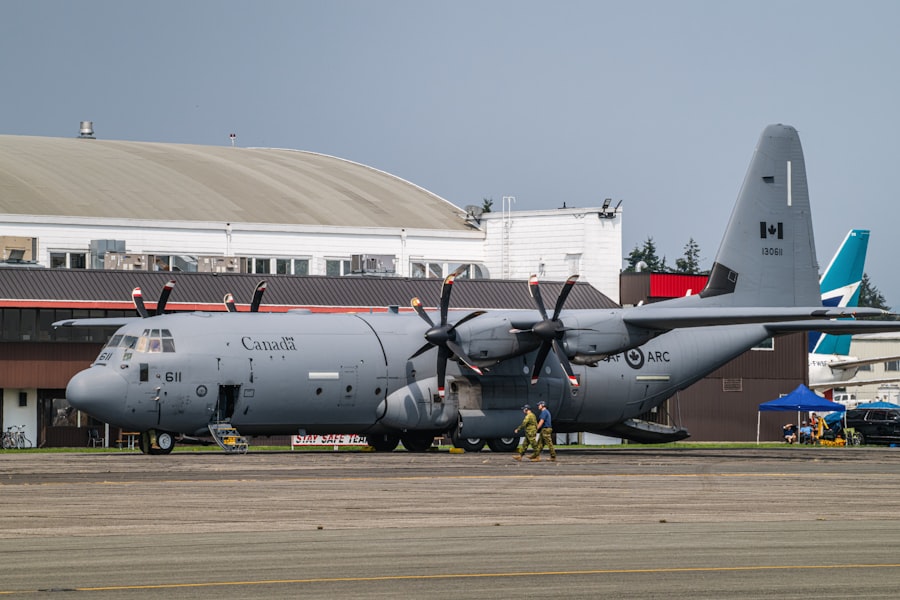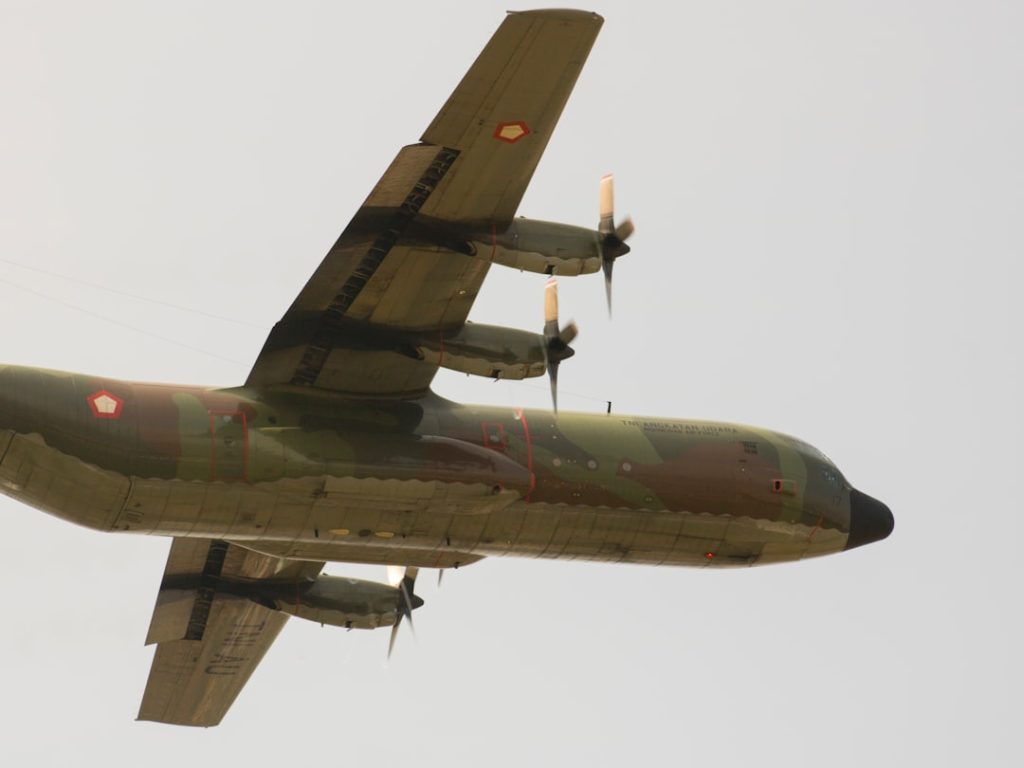The Lockheed C-130 Hercules is a versatile military transport aircraft that has earned a reputation for its reliability and adaptability in various operational environments. First introduced in the late 1950s, the C-130 has become a cornerstone of air mobility for numerous air forces around the world. Its unique design, characterized by a high-wing configuration and four turboprop engines, allows it to operate from short and unpaved airstrips, making it an invaluable asset in both combat and humanitarian missions.
The aircraft’s ability to perform a wide range of tasks—from troop transport to medical evacuation—has solidified its status as one of the most enduring and widely used military aircraft in history. The C-130’s significance extends beyond its military applications; it has also found a place in civilian operations, showcasing its versatility. With various modifications and configurations, the C-130 can be adapted for firefighting, search and rescue, and cargo transport in civilian contexts.
This dual-use capability highlights the aircraft’s robust design and operational flexibility, making it a vital tool for both military and humanitarian efforts across the globe.
Key Takeaways
- The C130 aircraft is a versatile and reliable military and civilian transport aircraft known for its rugged design and impressive performance capabilities.
- The C130 aircraft has a rich history and development, with the first flight taking place in 1954 and continuous upgrades and modifications over the years.
- The design and features of the C130 aircraft include a high-wing configuration, rear loading ramp, and a spacious interior capable of carrying a wide range of cargo and personnel.
- The military applications of the C130 aircraft include troop and cargo transport, aerial refueling, and special operations support, making it a crucial asset for various military operations.
- The civilian applications of the C130 aircraft range from firefighting and search and rescue missions to humanitarian aid and cargo transport, showcasing its versatility and adaptability in various industries.
History and Development of the C-130 Aircraft
The genesis of the C-130 Hercules can be traced back to the early 1950s when the United States Air Force sought a new tactical airlift aircraft that could operate in diverse environments. Lockheed Martin was awarded the contract to develop this aircraft, leading to the first flight of the prototype, the YC-130, on August 23, 1954. The design was revolutionary for its time, incorporating features such as a rear ramp for rapid loading and unloading of cargo, which significantly enhanced operational efficiency.
The C-130 was officially introduced into service in 1956, marking the beginning of an era defined by its unparalleled versatility. Over the decades, the C-130 has undergone numerous upgrades and modifications to meet evolving military needs. The introduction of variants such as the C-130E and C-130J Super Hercules has expanded its capabilities significantly.
The C-130E featured more powerful engines and increased fuel capacity, while the C-130J introduced advanced avionics, improved aerodynamics, and enhanced performance characteristics. These developments have ensured that the C-130 remains relevant in modern warfare, adapting to new technologies and operational requirements while maintaining its core design principles.
Design and Features of the C-130 Aircraft

The design of the C-130 Hercules is characterized by its high-wing configuration, which provides several advantages for tactical operations. This design allows for better ground clearance for loading and unloading cargo, as well as improved visibility for pilots during takeoff and landing. The four turboprop engines are mounted on the wings, providing excellent thrust-to-weight ratios and enabling short takeoff and landing capabilities.
This feature is particularly beneficial when operating from austere airfields where space is limited. One of the most distinctive features of the C-130 is its rear ramp door, which facilitates rapid loading and unloading of cargo and personnel. This ramp can be lowered to allow vehicles or equipment to drive directly onto or off the aircraft, enhancing operational efficiency during missions.
Additionally, the C-130 can be configured for various roles, including troop transport, medical evacuation, aerial refueling, and even firefighting. The modular design allows for quick reconfiguration between missions, making it an adaptable platform that can respond to a wide range of operational demands.
Military Applications of the C-130 Aircraft
| Application | Metric |
|---|---|
| Troop transport | Up to 92 troops or 64 paratroopers |
| Cargo transport | Up to 42,000 lbs of cargo |
| Airborne assault | Rapid deployment of troops and equipment |
| Aerial refueling | Capable of refueling other aircraft in flight |
| Special operations support | Used for covert insertion and extraction missions |
The military applications of the C-130 Hercules are extensive and varied, reflecting its role as a tactical airlift aircraft. One of its primary functions is to transport troops and equipment to forward operating bases or combat zones. The ability to operate from short and unpaved runways allows military forces to deploy quickly and efficiently in diverse environments.
This capability has been crucial in numerous conflicts, including Vietnam, Iraq, and Afghanistan, where rapid troop movement is essential for mission success. In addition to troop transport, the C-130 is also employed in specialized roles such as medical evacuation (MEDEVAC). The aircraft can be configured with stretchers and medical equipment to transport injured personnel from battlefield locations to medical facilities.
This capability has saved countless lives by providing timely medical care in critical situations. Furthermore, the C-130 has been utilized for aerial refueling missions, allowing it to extend the range of fighter jets and other aircraft during operations. Its versatility in these roles underscores its importance within military logistics and operational planning.
Civilian Applications of the C-130 Aircraft
Beyond its military applications, the C-130 Hercules has found significant utility in civilian operations. Various modifications have allowed it to serve in roles such as firefighting, humanitarian aid delivery, and cargo transport. For instance, during wildfire seasons, modified C-130s equipped with firefighting systems can drop water or fire retardant on active fires, providing critical support to ground crews battling blazes.
This capability has made it an essential asset for firefighting agencies around the world. Humanitarian missions also benefit from the C-130’s capabilities. In disaster-stricken areas where infrastructure may be damaged or non-existent, the aircraft can deliver food, medical supplies, and other essential goods quickly and efficiently.
Its ability to land on short or unpaved runways allows it to reach remote locations that larger commercial aircraft cannot access. Organizations such as the United Nations and various non-governmental organizations (NGOs) have utilized C-130s for disaster relief efforts, demonstrating its vital role in global humanitarian assistance.
Performance and Capabilities of the C-130 Aircraft

The performance characteristics of the C-130 Hercules are impressive and contribute significantly to its operational effectiveness. The aircraft typically has a maximum payload capacity of around 45,000 pounds (20,400 kg), allowing it to transport a wide variety of cargo types. Its range varies depending on the specific variant but generally exceeds 2,000 nautical miles (3,700 km) with a full load.
This range enables it to conduct long-distance missions without requiring frequent refueling stops. The C-130’s speed is another notable aspect of its performance; it can cruise at approximately 300 knots (about 345 mph or 555 km/h). This speed allows it to reach destinations quickly while still maintaining low-speed capabilities necessary for tactical operations such as dropping troops or supplies into confined areas.
Additionally, its ability to operate at low altitudes enhances its survivability in hostile environments by reducing exposure to enemy radar systems.
Future of the C-130 Aircraft
As military aviation continues to evolve with advancements in technology and changing operational requirements, the future of the C-130 Hercules appears promising yet challenging. Lockheed Martin has committed to ongoing upgrades for existing fleets, ensuring that they remain competitive against newer aircraft designs. The introduction of advanced avionics systems, improved engines, and enhanced communication capabilities will keep the C-130 relevant in modern warfare scenarios.
Moreover, discussions surrounding potential new variants or derivatives of the C-130 are ongoing within defense circles. As global threats evolve and new challenges arise—such as cyber warfare or asymmetric conflicts—the need for adaptable platforms like the C-130 will remain critical. Future iterations may incorporate unmanned capabilities or advanced sensor systems that enhance situational awareness during missions.
The adaptability inherent in the C-130’s design positions it well for continued service well into the future.
The Versatility and Reliability of the C-130 Aircraft
The Lockheed C-130 Hercules stands as a testament to engineering excellence and operational versatility in military aviation history. Its ability to perform a multitude of roles—from tactical airlift to humanitarian assistance—demonstrates its adaptability across various contexts. With a legacy spanning over six decades, the C-130 has proven itself time and again as a reliable workhorse for air forces around the world.
As it continues to evolve through modernization efforts and potential new variants, the C-130 will likely remain an integral part of both military operations and civilian applications for years to come. Its unique combination of performance capabilities, rugged design, and operational flexibility ensures that it will continue to meet the demands of an ever-changing global landscape while serving as a vital asset in both combat scenarios and humanitarian missions alike.


